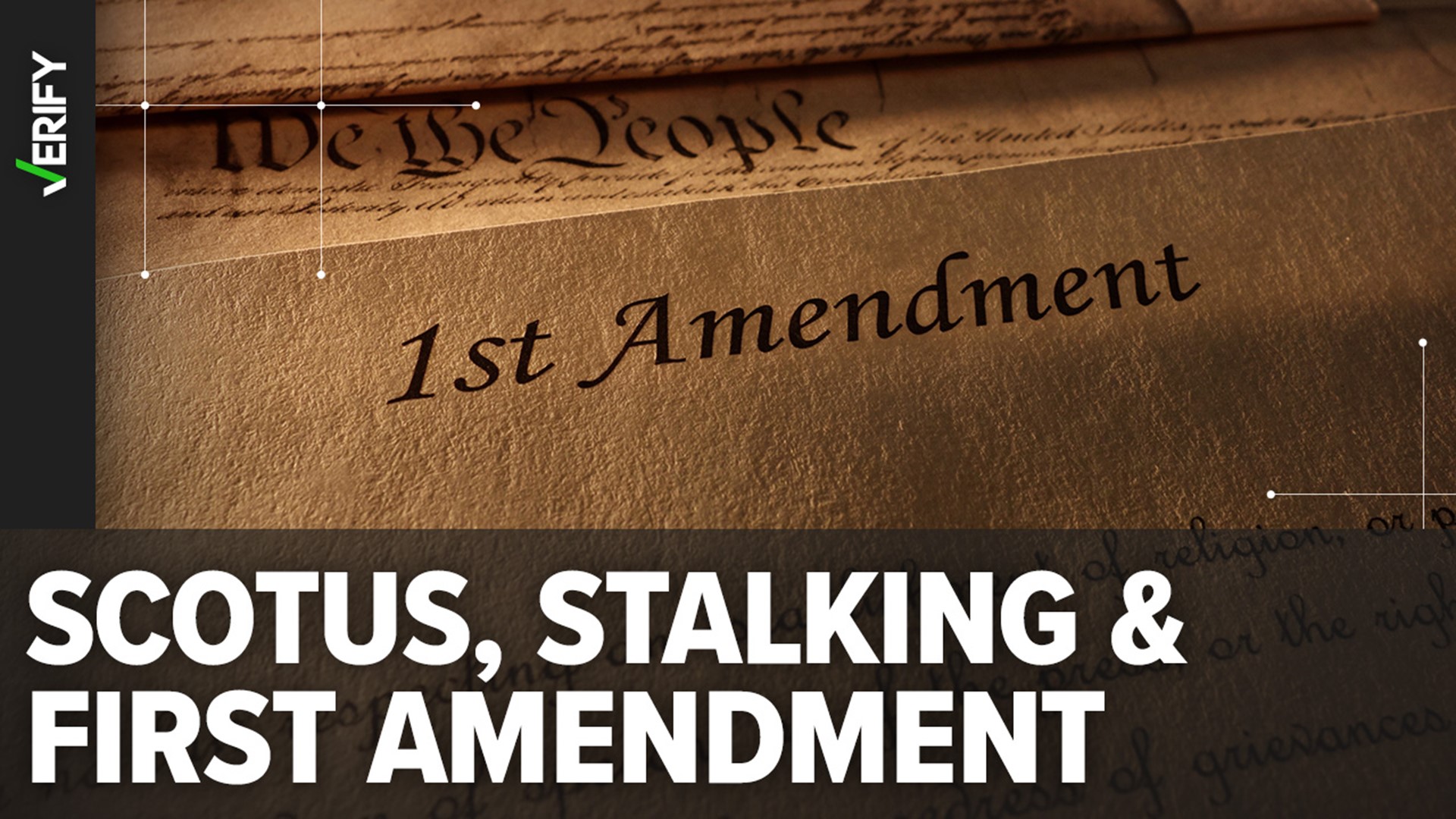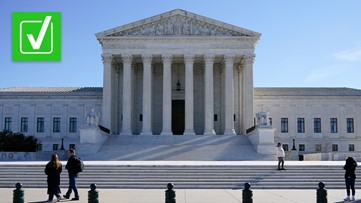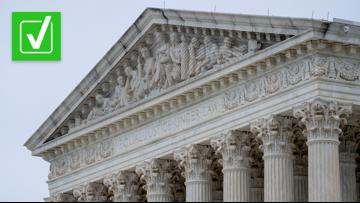On June 27, the Supreme Court reversed the conviction of Billy Counterman, a Colorado man who was sentenced to more than four years in prison after he was found guilty on charges of stalking and harassment for sending threatening messages to a local musician.
Counterman appealed the verdict, saying his First Amendment right to free speech was violated because he didn’t know the messages he was sending were threatening.
The Supreme Court agreed and reversed Counterman’s conviction. His case will now return to a lower court to be retried or thrown out.
The ruling has prompted people on social media to ask if the court’s ruling means stalking is protected under the First Amendment.
THE QUESTION
Did the Supreme Court rule that stalking is protected under the First Amendment?
THE SOURCES
- Supreme Court ruling on Counterman v. Colorado
- Clay Calvert, nonresident senior fellow with the American Enterprise Institute and professor emeritus of law at the University of Florida
THE ANSWER
No, the Supreme Court did not rule stalking is protected under the First Amendment.
WHAT WE FOUND
From 2014 to 2016, Billy Counterman sent hundreds of Facebook messages to local musician Coles Whalen that she said made her fear for her safety. According to court records, the conversation was one-sided. Whalen didn’t respond, and Whalen tried blocking Counterman several times. In those instances, Counterman would create a new account and continue messaging the musician, Colorado appeals court records say.
Counterman was charged with one count of stalking (credible threat), one count of stalking (serious emotional distress) and one count of harassment. In 2017, he was found guilty of those charges and sentenced to 4 ½ years in prison.
Prosecutors in his case said his messages to the musician rose to the level of a “true threat,” which under current law is not protected by the First Amendment. A “true threat” is defined as “a statement meant to frighten people into believing they will be seriously harmed by the speaker.”
But Counterman’s attorneys said his rights were violated because the First Amendment requires prosecutors to show not only that he knew his statements were threatening, but also that he was aware the messaging could be interpreted as threatening by a reasonable person.
His attorneys said in the appeal that Counterman suffered from mental illness and was not aware his messages to Whalen were threatening, therefore they couldn’t be considered a “true threat.”
An appeals court in Colorado upheld Counterman’s conviction, saying overturning it would allow “devious stalkers to escape accountability by insisting they meant nothing by their harmful statements.” Counterman’s attorneys appealed to the U.S. Supreme Court.
The Supreme Court, in a 7-2 decision, reversed Counterman’s conviction, ruling that for something to be considered a “true threat,” the speaker must have “some subjective understanding of his statements’ threatening nature.” Justices Amy Coney Barrett and Clarence Thomas dissented.
The ruling did not address other stalking-related charges or prevent prosecutors from pursuing cases over threatening messages.
Clay Calvert, nonresident senior fellow with the American Enterprise Institute and University of Florida law professor, told VERIFY the court’s focus on the intention of the perpetrator allowed the courts to find a balance between what is considered a “true threat” and what is considered protected speech.
The court affirmed that anything considered a “true threat” is still not protected by the First Amendment, but Justice Elena Kagan wrote in the ruling that focusing solely on the speaker’s speech – and not the intention of the speech – as a way to determine if it was a “true threat” would provide a “chilling effect” on speech that is protected.
Calvert says Kagan’s opinion referred to the risk of self-censorship.
With this ruling, it will fall on the prosecutor to prove and for a jury to decide if the person intended their statements to be threatening or if a reasonable person would consider the statement threatening, Calvert said.
In Counterman’s case, he says he didn’t know his messages were threatening and didn’t know if his messages were being perceived as threatening, therefore his statements shouldn't be considered a “true threat.”
But, if someone sent messages or made statements they knew were threatening and the statements were perceived as threatening by the reasonable person receiving them, it would not be protected under the First Amendment, Calvert said. Those actions would be considered “true threats.”
Under this new Supreme Court ruling, if someone is accused of stalking someone through speech or messaging, a prosecutor has to prove to a jury at least one of the following, for those messages to be considered a “true threat”:
- The person intended to make the threat
- The person knew the statements could be perceived as threatening
- The statements could be perceived as threatening by a reasonable person
Calvert says that while this ruling doesn't stop prosecutions of stalking cases, it could cause a domino effect because any defendant in a case involving harmful or threatening speech could claim they didn’t know their statements were threatening, or being perceived as threatening.
“Every defendant now will claim that, ‘No I was just joking, I was unaware, I had no idea the message would be perceived as threatening’ and they will get off the hook. There is that possibility in some cases, but it’ll be up for the jury to figure that out,” Calvert told VERIFY.












